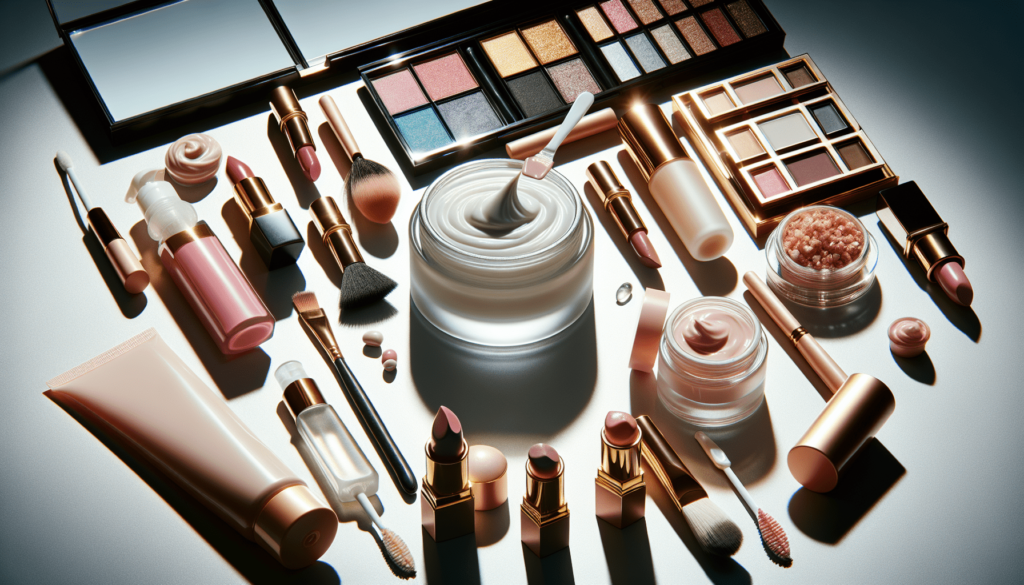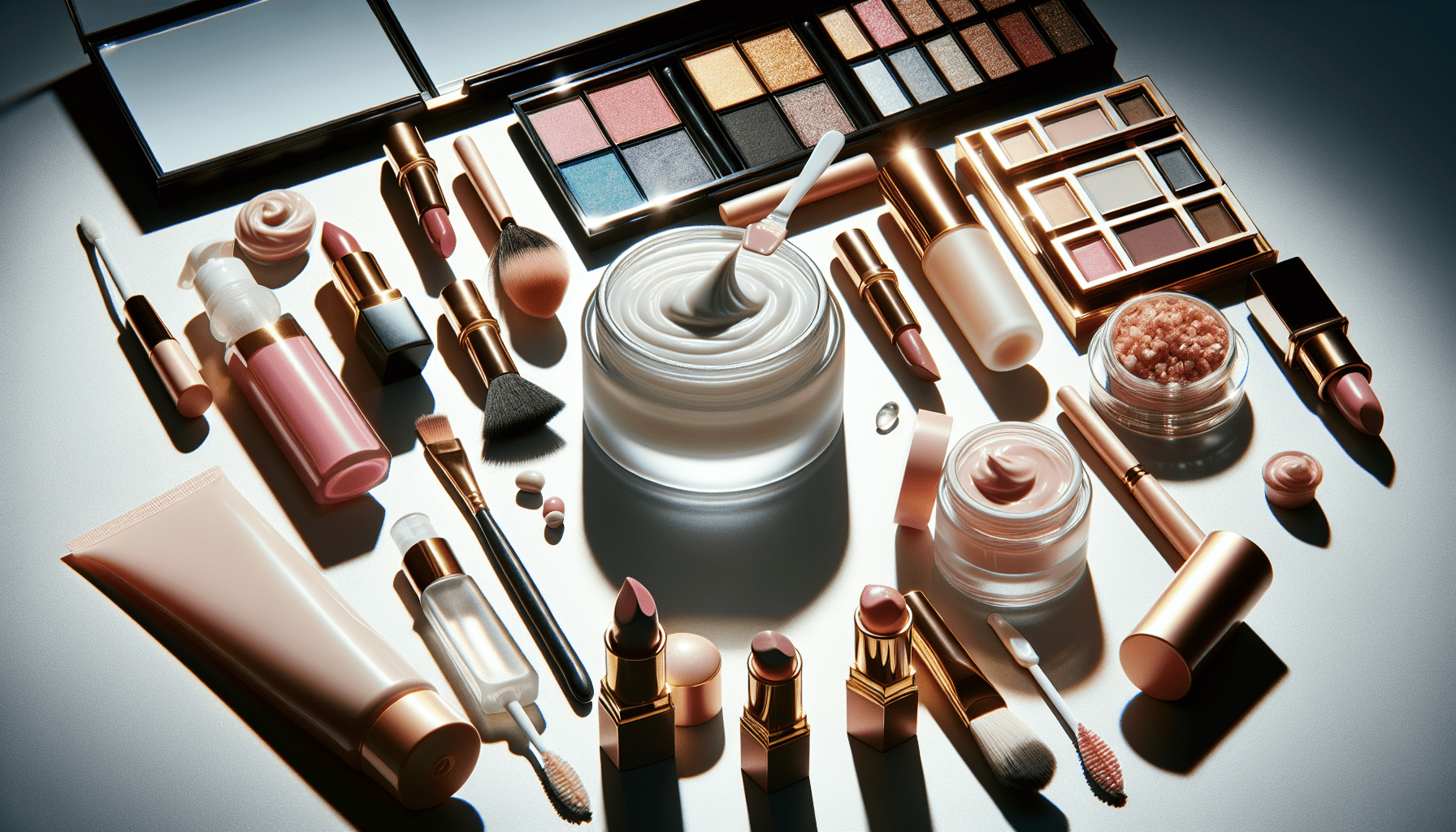Welcome to a confident and allergen-free world of cosmetics! In “How To Identify And Avoid Common Cosmetics Allergens,” you’ll find essential tips and insights to help you navigate the often confusing world of beauty products. You’ll learn how to spot hidden irritants, understand ingredient labels, and make informed choices to keep your skin healthy and glowing. Say goodbye to unexpected rashes and flare-ups as you arm yourself with knowledge and take control of your beauty routine with confidence. Have you ever applied a new beauty product, only to find your skin red, itchy, or outright irritated? You’re not alone. Navigating the world of cosmetics can be daunting, especially when allergens are lurking in seemingly harmless products. Understanding how to identify and avoid common cosmetics allergens can save you a lot of discomfort and help you make better choices for your skin.

What Are Cosmetics Allergens?
Cosmetics allergens are ingredients in beauty products that can trigger allergic reactions or irritate your skin. Allergic reactions may cause symptoms like rashes, itching, swelling, and even more severe reactions such as difficulty breathing. These allergens can be found in various types of cosmetics, from makeup to skincare products, shampoos, and even perfumes.
How Allergens Trigger Reactions
When your skin comes into contact with an allergen, your immune system mistakenly identifies it as a harmful substance. This triggers an allergic reaction that can range from mild to severe. Your body’s response may include the release of histamines, leading to symptoms like redness, itching, and swelling.
Common Symptoms of Cosmetics Allergies
It’s essential to identify the symptoms of cosmetics allergies so you can act quickly. Here are some common symptoms you might experience:
| Symptom | Description |
|---|---|
| Redness | Areas of your skin turning red or inflamed |
| Itching | An irritating sensation that makes you want to scratch |
| Swelling | Parts of your skin becoming puffy or swollen |
| Rash | Red, blotchy patches on your skin |
| Hives | Raised, itchy welts on the skin’s surface |
| Burning Sensation | A stinging or tingling feeling on the skin |
| Blisters | Small pockets of fluid appearing on your skin |
| Peeling | Skin flaking off in small or large pieces |
Identifying Common Cosmetics Allergens
The first step in preventing allergic reactions is knowing which ingredients to watch out for. Cosmetics products often contain a cocktail of ingredients, some of which are more likely to cause issues than others.
Fragrances
Fragrances are one of the most common allergens in cosmetics. They are added to products to provide a pleasant smell but can cause allergic reactions in sensitive individuals.
Examples:
- Linalool
- Limonene
- Geraniol
Preservatives
Preservatives extend the shelf life of cosmetics by preventing the growth of bacteria and fungi. Unfortunately, they are also common culprits in allergic reactions.
Examples:
- Parabens (e.g., methylparaben, butylparaben)
- Formaldehyde-releasing agents (e.g., DMDM hydantoin, quaternium-15)
- Isothiazolinones (e.g., methylisothiazolinone)
Dyes and Pigments
Coloring agents used in cosmetics can also cause allergic reactions. These are often found in makeup products like eyeshadow, blush, and lipstick.
Examples:
- FD&C dyes (e.g., FD&C Red No. 40)
- Carmine
- Coal tar dyes
Metals
Some cosmetics contain trace amounts of metals, which can cause reactions, especially in people with metal allergies.
Examples:
- Nickel
- Chromium
- Cobalt
Natural Ingredients
While we often assume that natural ingredients are kinder to our skin, they can also cause allergic reactions. Essential oils and botanical extracts are common natural allergens.
Examples:
- Tea tree oil
- Lavender oil
- Aloe Vera
Reading Labels and Identifying Ingredients
Being proactive and reading product labels carefully is crucial in identifying potential allergens. Here’s how you can effectively scrutinize those tiny print ingredients lists.
Steps to Read Labels
- Look for the Main Ingredients: Usually listed first, they make up the highest percentage of the product.
- Search for Common Allergens: Use the list of common cosmetic allergens to guide you.
- Check for Scientific Names: Some ingredients are listed under their scientific names which can be unfamiliar.
- Patch Test: Before going all-in on a product, do a patch test to ensure it won’t cause a reaction.
Deciphering Scientific Names
Scientific names can be tricky. For example, knowing that “tocopheryl acetate” is a form of Vitamin E, or that “sodium laureth sulfate” is a surfactant, can help you make educated decisions.
Apps and Resources
There are apps available that can help you decode ingredients by scanning barcodes or inputting product names.
Popular Apps:
- Think Dirty
- EWG’s Skin Deep
- Yuka
Manufacturer Information
Don’t forget, sometimes the best way to get information is straight from the source. Most companies provide detailed ingredient information on their websites or customer service lines.
Alternatives and Avoiding Triggers
Once you’ve identified potential allergens, the next step is finding alternatives that won’t irritate your skin. Many brands cater specifically to those with sensitive skin or allergies.
Hypoallergenic Products
Hypoallergenic products are designed to minimize the risk of allergic reactions. However, it’s worth noting that the term “hypoallergenic” is not heavily regulated, so it’s essential to still read the labels.
Fragrance-free
Opt for products labeled “fragrance-free” or “unscented.” These products either contain no fragrance chemicals or only enough to mask the natural scent of the ingredients.
Preservative-free
Some products use alternative preservation methods, like airless packaging, to avoid traditional preservatives.
Organic and Natural Alternatives
Organic products may offer safer alternatives, but remember, “natural” does not always mean “non-allergenic.”
Example Table for Safer Cosmetic Brands:
| Brand | Specialty | Product Examples |
|---|---|---|
| Vanicream | Fragrance-free, preservative-free | Cleanser, moisturizer |
| CeraVe | Non-irritating, gentle formula | Hydrating cleanser, facial lotion |
| Neutrogena | Dermatologist recommended | Makeup remover, sunscreen |
| Burt’s Bees | Natural ingredients | Lip balm, facial oil |

Tips for Avoiding Allergens
Being cautious and strategic about your product choices can help you avoid allergic reactions.
Perform Patch Tests
Before using a new product, apply a small amount to a discreet area of your skin and wait 24 hours to check for a reaction.
Simplify Your Routine
The fewer products you use, the fewer opportunities for allergens to irritate your skin. Stick to the essentials.
Seasonal Changes
Be mindful that your skin’s sensitivity may change with the seasons. What works in summer might not work in winter.
Consult a Dermatologist
If you’re unsure about which products are safe, a dermatologist can provide tailored advice based on your specific skin needs.
What to Do If You Have an Allergic Reaction
Despite your best efforts, you might still encounter an allergen. Knowing how to address a reaction can help alleviate symptoms quickly.
Immediate Steps to Take
- Stop Using the Product: Immediately discontinue use of the suspected product.
- Clean the Area: Wash the affected area with mild soap and water.
- Apply a Cold Compress: This can help reduce swelling and itching.
Over-the-Counter Remedies
Consider using over-the-counter treatments like hydrocortisone cream or antihistamines to manage symptoms.
When to See a Doctor
If your symptoms are severe or do not improve, consult a healthcare provider promptly. Difficulty breathing or swelling of the face and throat are emergencies requiring immediate medical attention.
Frequently Asked Questions
To wrap things up, here are some frequently asked questions you might have about cosmetics allergens and how to avoid them.
Can makeup cause long-term damage if I have an allergic reaction?
While many reactions are temporary, severe or repeated reactions can cause long-term skin issues, including hyperpigmentation or scarring. It’s critical to avoid known allergens to protect your skin’s health.
Are hypoallergenic products always safe?
Not necessarily. “Hypoallergenic” is a marketing term that implies a product is less likely to cause an allergy, but it’s not a guarantee. Always read labels and perform patch tests.
Is it possible to outgrow allergies?
Some people may find their sensitivities change over time, but it’s also possible to develop new allergies. Always stay vigilant and adaptable with your skincare routine.
Can I develop an allergy to a product I’ve used for years?
Yes, it’s possible. Sensitivities can develop over time or due to changes in the product’s formula. Regularly review ingredient lists, even for tried-and-true products.
What about DIY skincare products?
While making your own skincare products can help you control the ingredients, they still carry risks. Essential oils and other natural ingredients can be potent allergens.
Conclusion
Understanding how to identify and avoid common cosmetics allergens is crucial for maintaining healthy, radiant skin. By being vigilant about reading labels, performing patch tests, and choosing safer product alternatives, you can significantly reduce your risk of unpleasant reactions. Remember, your skin is your body’s largest organ, and it deserves all the love and care you can give it. Stay informed, stay safe, and always prioritize your skin’s health.
